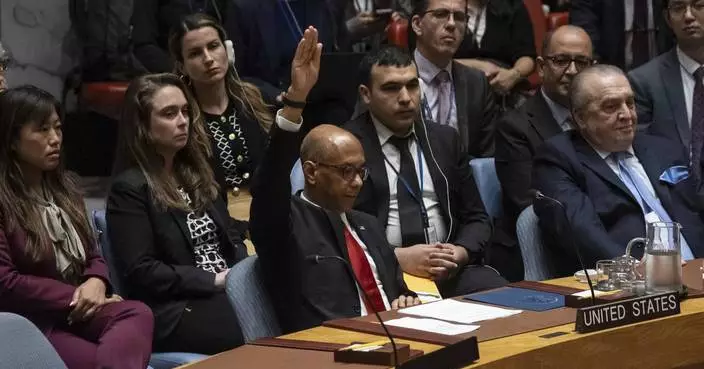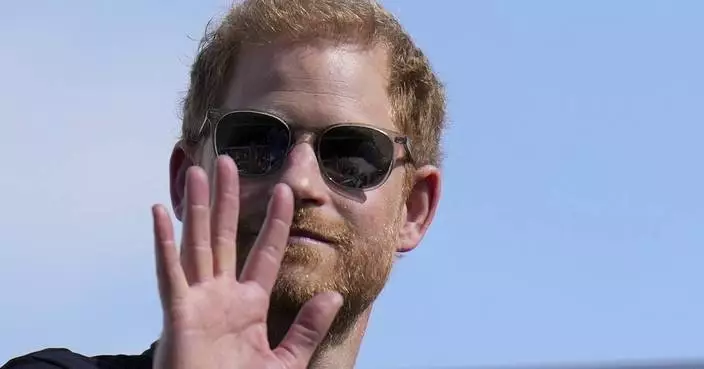A private dive team has located the last U.S. Navy warship to be sunk by a German submarine in World War II, just a few miles (kilometers) off the coast of Maine.
The sinking of the USS Eagle PE-56 on April 23, 1945, was originally blamed on a boiler explosion. But the Navy determined in 2001 that it had been sunk by a German submarine.
The patrol boat's precise location remained a mystery — until now.
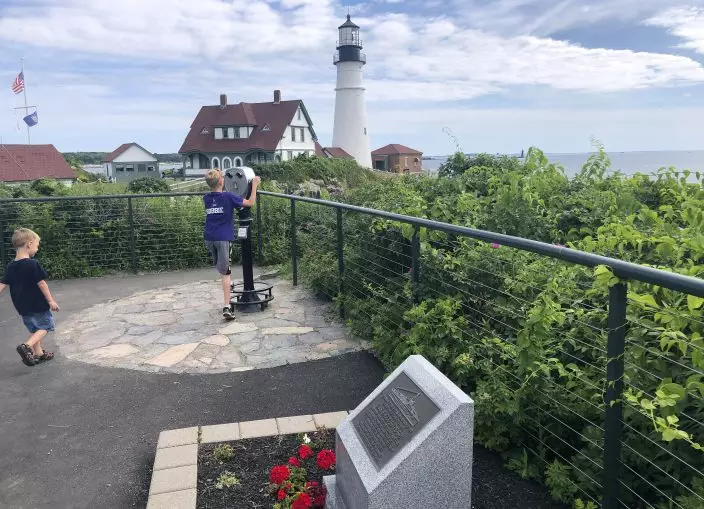
Children take in the view at Fort Williams Park at Cape Elizabeth, Maine, on Thursday, July 18, 2019, where a plaque, foreground, remembers those killed when the USS Eagle PE-56 was sunk During World War II off the Maine coast on April 23, 1945. The Navy determined in 2001 that the patrol boat had been sunk by a German submarine. On Monday, July 15, 2019, Garry Kozak, a specialist in undersea searches, announced that Ryan King, a New Hampshire diver, located the vessel’s bow and stern about three miles off Cape Elizabeth in June 2018. (AP PhotoDavid Sharp)
Garry Kozak, a specialist in undersea searches, announced this week that diver Ryan King, of Brentwood, New Hampshire, confirmed in June 2018 that an object Kozak previously discovered on sonar is the vessel 300 feet (90 meters) down.
King's team, which later began working with the Smithsonian Channel, extensively explored the ship on the ocean floor, 5 miles (8 kilometers) off Cape Elizabeth, Maine.
"With the deck guns, there was no mistaking it for what it was," said Paul Lawton, a Massachusetts attorney whose research helped to convince the Navy how the ship was sunk.
The patrol boat was equipped with depth charges, explosives used to battle enemy submarines. But it was towing a practice target for bombers from a nearby Brunswick Naval Air Station when it sank. Only 13 of the 62 crew members survived; they were plucked from the water by a nearby Navy destroyer.
The underwater video, which will be aired in the fall on the Smithsonian Channel's "Hunt for Eagle 56," backs up the story of sailors who said an explosion broke the ship into two pieces, said Kozak, of Derry, New Hampshire.
The two hull segments, about 350 feet (105 meters) apart, blended with the uneven, craggy ocean floor, making it difficult to locate them with sonar, Kozak said. Underwater video clearly shows the deck gun on the bow; farther away, depth charges are clearly visible on the stern, Kozak.
The divers' research is expected to offer definitive proof that the sub was indeed destroyed by a German submarine, which itself was sunk days later off Block Island, Rhode Island, Kozak said. The video shows the ship's boilers are intact, he said.
The Eagle's sinking was once a mystery.
The World War I-era patrol boat was ripped by a blast, and several survivors reported seeing a submarine conning tower featuring a painted red horse on a yellow shield.
The sinking was ruled a boiler explosion at the time, but Lawton helped connect the dots to show it was sunk by a German submarine with the same markings.
The day before Germany signed a surrender on May 7, 1945, U.S. Navy destroyers sank the submarine, U-853, south of New London, Connecticut, after it attacked a cargo ship.
The submarine is a popular attraction for divers because it's accessible in 130 feet (40 meters) of water.
But the Eagle sits 300 feet down, far beyond the reach of recreational divers.
The Navy is convinced that the vessel located by the divers is the Eagle and is appreciative of dive team's respectful research of the site, said Robert Neyland, who leads the underwater archaeology branch of the Naval History and Heritage Command.
Both sunken vessels are considered war graves, and federal law prevents divers from tampering with them. The remains of one of the German sailors were retrieved by a diver in 1960, sparking outage; the sailor was buried with military honors in Newport, Rhode Island.
Online:
https://www.smithsonianchannel.com/eagle56
Follow David Sharp on Twitter at https://twitter.com/David_Sharp_AP
TOKYO (AP) — The American envoy to the United Nations called Friday for countries armed with atomic weapons to pursue nuclear disarmament as she visited the atomic bomb museum in Nagasaki, Japan.
Linda Thomas-Greenfield, who became the first U.S. cabinet member to visit Nagasaki, stressed the importance of dialogue and diplomacy amid a growing nuclear threat in the region.
“We must continue to work together to create an environment for nuclear disarmament. We must continue to prevent the spread of nuclear weapons in every corner of the world,” she said after a tour of the atomic bomb museum.
“For those of us who already have those weapons, we must pursue arms control. We can and must work to ensure that Nagasaki is the last place to ever experience the horror of nuclear weapons,” she added, standing in front of colorful hanging origami cranes, a symbol of peace.
The United States dropped the world’s first atomic bomb on Hiroshima on Aug. 6, 1945, destroying the city and killing 140,000 people. A second attack three days later on Nagasaki killed 70,000 more people. Japan surrendered on Aug. 15, ending World War II and its nearly half-century of aggression in Asia.
Nagasaki Gov. Kengo Oishi said in a statement that he believed Thomas-Greenfield's visit and her first-person experience at the museum “will be a strong message in promoting momentum of nuclear disarmament for the international society at a time the world faces a severe environment surrounding atomic weapons.”
Oishi said he conveyed to the ambassador the increasingly important role of Nagasaki and Hiroshima in emphasizing the need of nuclear disarmament.
Thomas-Greenfield's visit to Japan comes on the heels of Prime Minister Fumio Kishida's official visit to the United States last week and is aimed at deepening Washington's trilateral ties with Tokyo and Seoul. During her visit to South Korea earlier this week, she held talks with South Korean officials, met with defectors from North Korea and visited the demilitarized zone.
The ambassador said the United States is looking into setting up a new mechanism for monitoring North Korea's nuclear weapons program. Russia and China have thwarted U.S.-led efforts to step up U.N. sanctions on North Korea over its ballistic missile testing since 2022, underscoring a deepening divide between permanent Security Council members over Russia’s war on Ukraine.
She said it would be “optimal” to launch the new system next month, though it is uncertain if that is possible.
The U.N. Security Council established a committee to monitor sanctions, and the mandate for its panel of experts to investigate violations had been renewed for 14 years until last month, when Russia vetoed another renewal.
In its most recent report, the panel of experts said it is investigating 58 suspected North Korean cyberattacks between 2017 and 2023 valued at approximately $3 billion, with the money reportedly being used to help fund its weapons development.
The United States, Japan and South Korea have been deepening security ties amid growing tension in the region from North Korea and China.
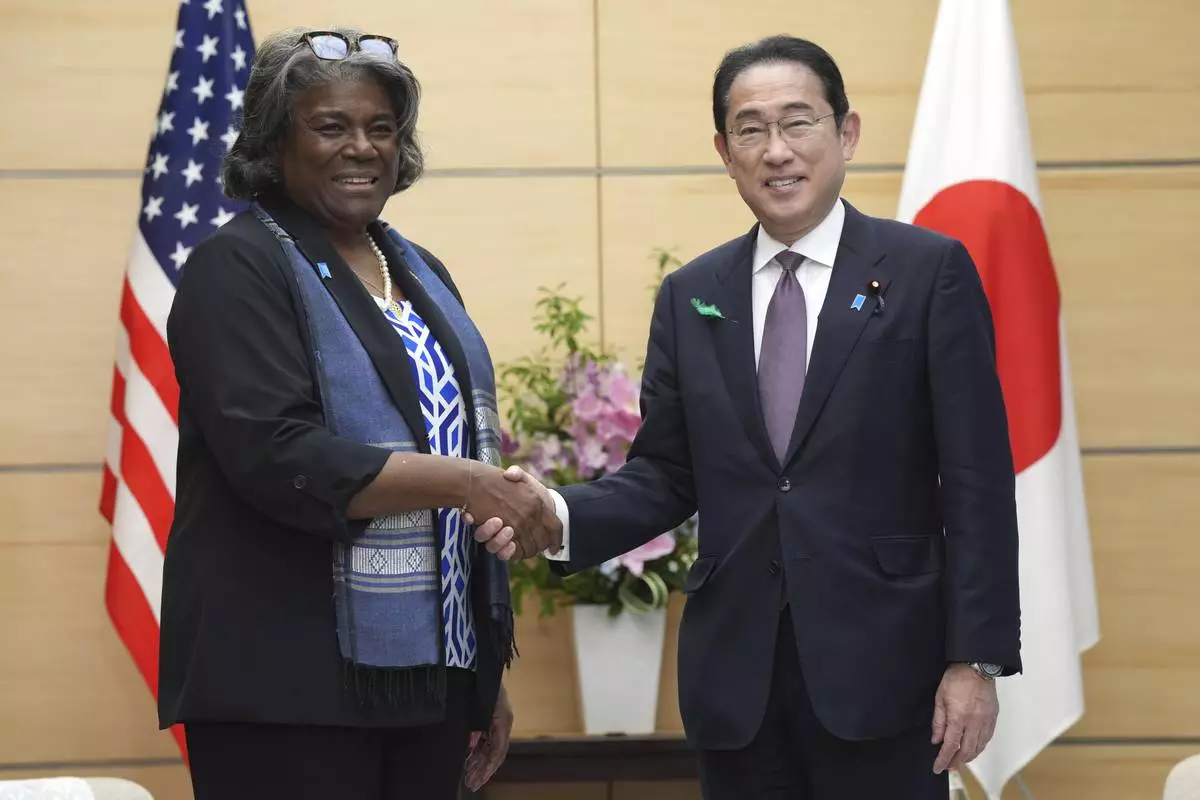
U.S. Ambassador to United Nations Linda Thomas-Greenfield, left, and Japan's Prime Minister Fumio Kishida, right, shake hands during a meeting Friday, April 19, 2024, at prime minister's office in Tokyo. (AP Photo/Eugene Hoshiko, Pool)

U.S. Ambassador to United Nations Linda Thomas-Greenfield, left, and Japan's Prime Minister Fumio Kishida, right, shake hands during a meeting Friday, April 19, 2024, at prime minister's office in Tokyo. (AP Photo/Eugene Hoshiko, Pool)
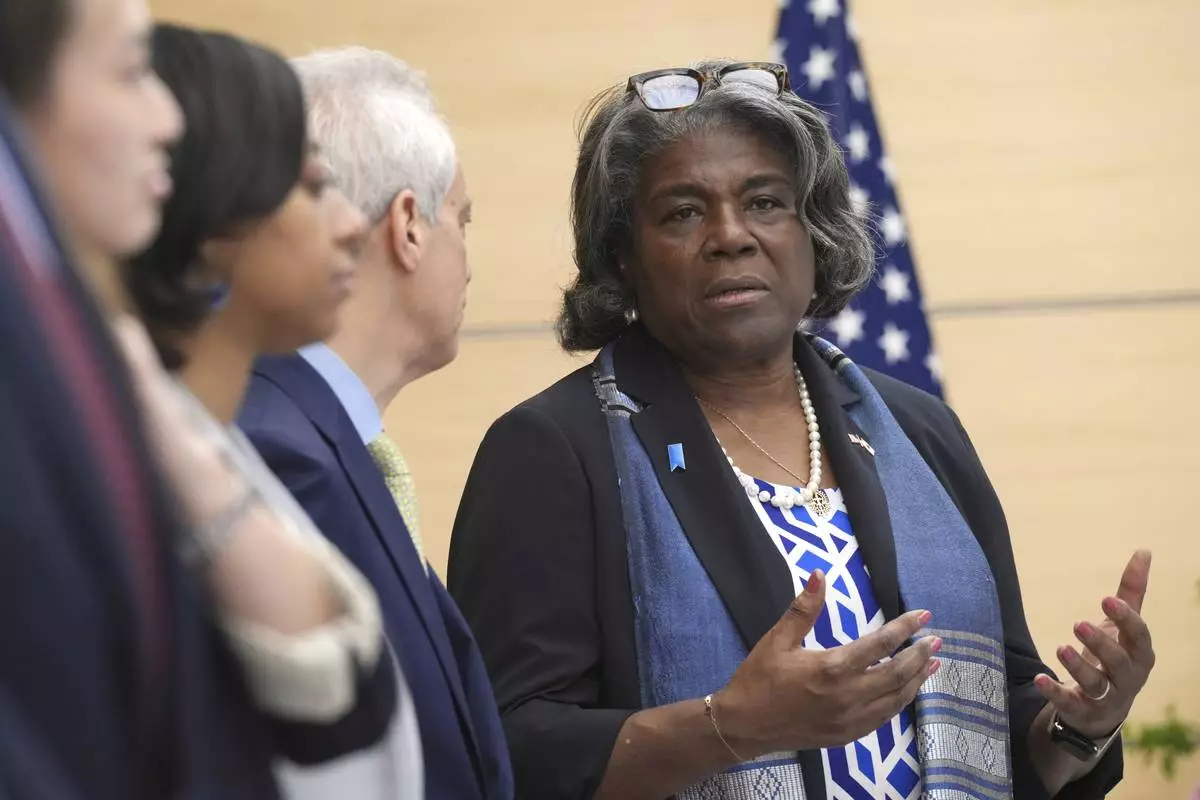
U.S. Ambassador to United Nations Linda Thomas-Greenfield, right, speaks to Rahm Emanuel, U.S. Ambassador to Japan, second right, as they wait for a meeting with Japan's Prime Minister Fumio Kishida Friday, April 19, 2024, at prime minister's office in Tokyo. (AP Photo/Eugene Hoshiko, Pool)
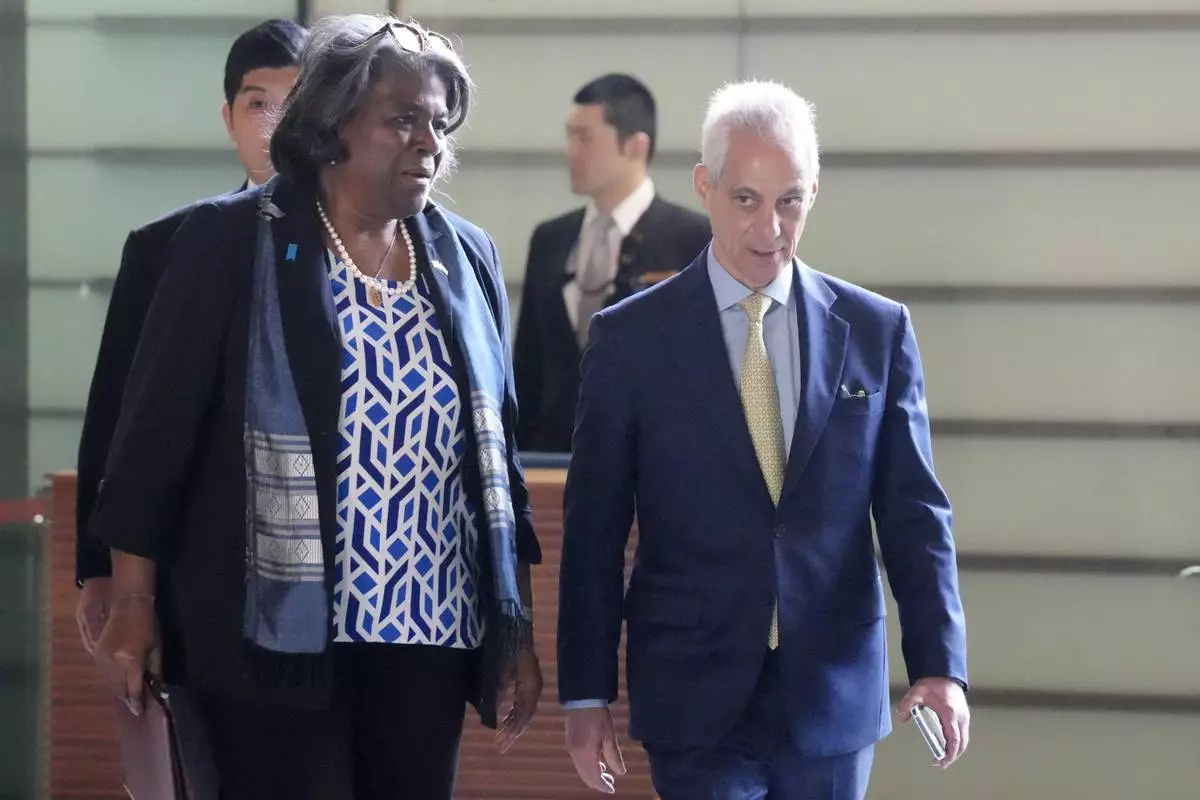
U.S. Ambassador to United Nations Linda Thomas-Greenfield, left, and Rahm Emanuel, U.S. Ambassador to Japan, right, walk to meet Japan's Prime Minister Fumio Kishida Friday, April 19, 2024, at prime minister's office in Tokyo. (AP Photo/Eugene Hoshiko, Pool)
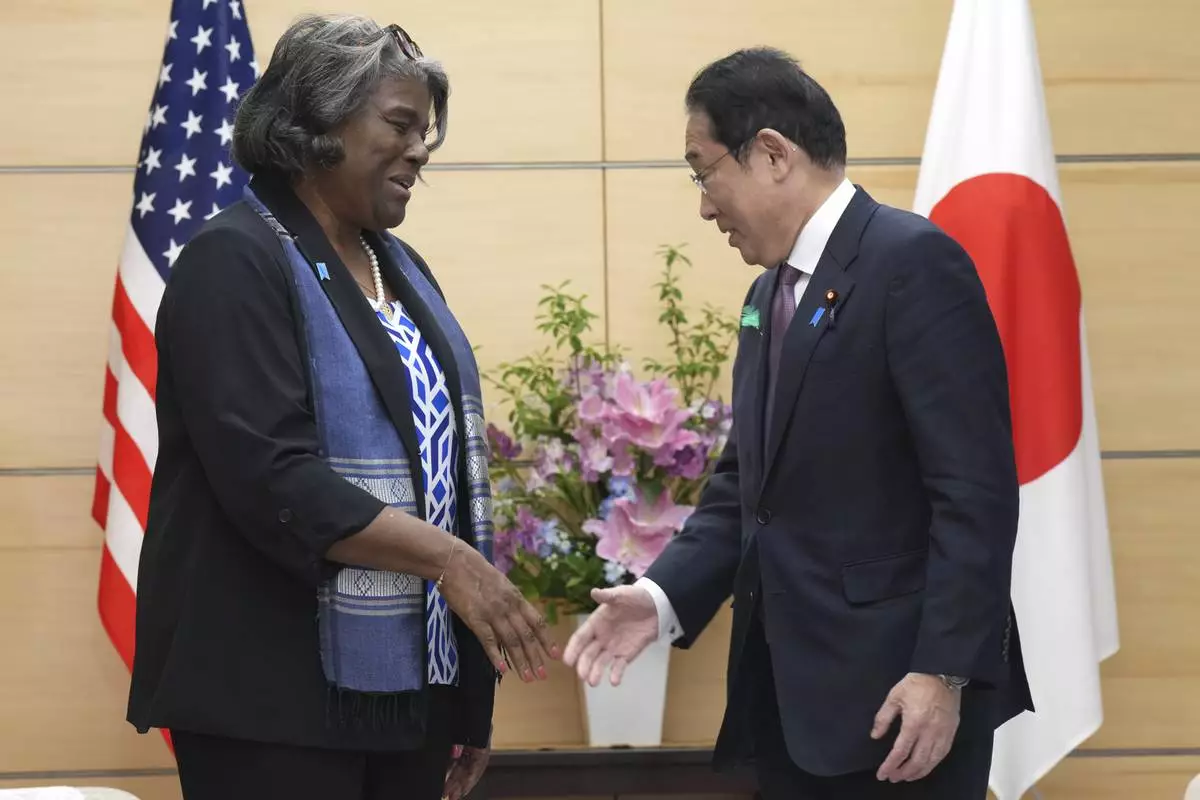
U.S. Ambassador to United Nations Linda Thomas-Greenfield, left, and Japan's Prime Minister Fumio Kishida, right, talk prior to a meeting Friday, April 19, 2024, at prime minister's office in Tokyo. (AP Photo/Eugene Hoshiko, Pool)
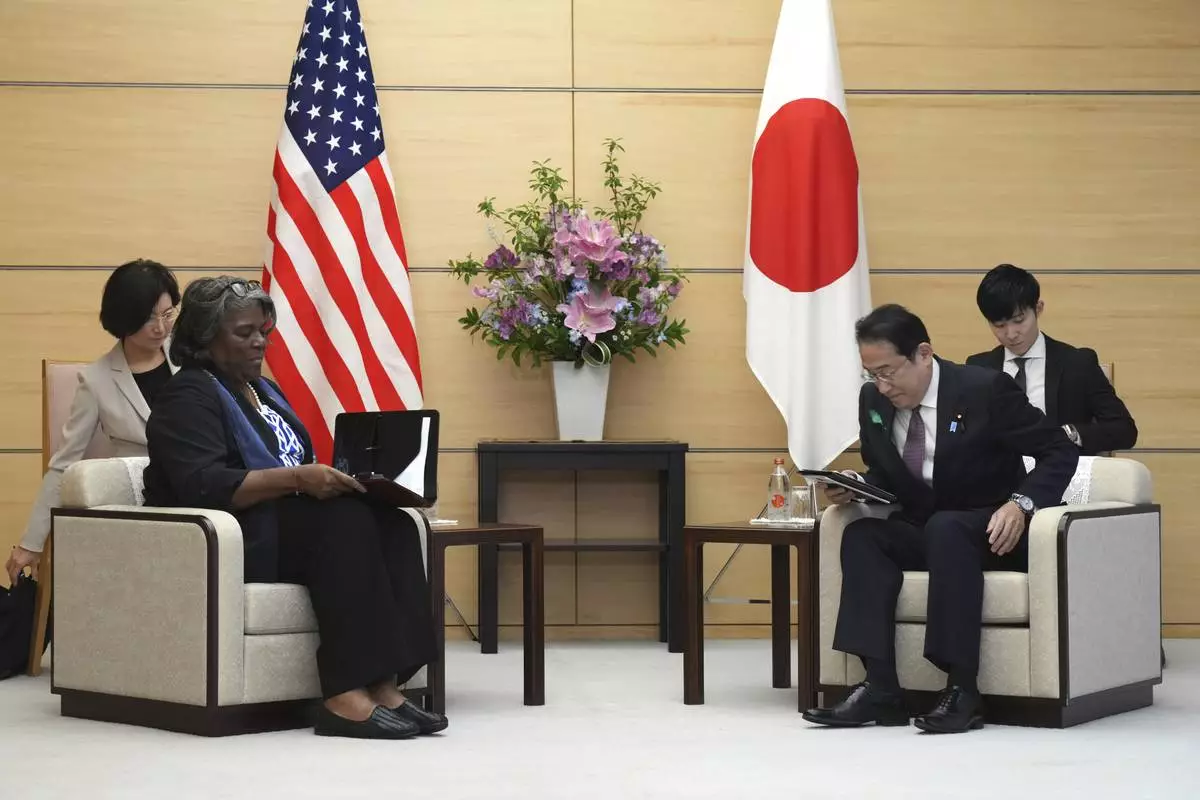
U.S. Ambassador to United Nations Linda Thomas-Greenfield, left, and Japan's Prime Minister Fumio Kishida, right, prepare to talk during a meeting Friday, April 19, 2024, at prime minister's office in Tokyo. (AP Photo/Eugene Hoshiko, Pool)











